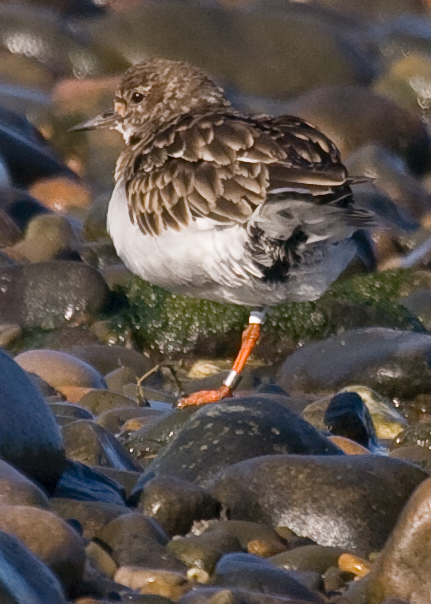Sunday 30 th January was a miserable day after a week of sunshine. Typically it was then when a single Waxwing decided to visit my neighbours garden. I have always been a fair weather photographer but decided to roll my car down the front street and use it as a hide.The compromises between speed, aperture and depth of field are much more critical in poor light. This Waxwing had the choice of two types of Cotoneaster, Firethorne and another heavily berried bush. It returned time and time again to the same bush rapidly swallowing berries and leaving. Whilst waiting for the Waxwing to return a small flock of Goldfinches arrived and proceeded to peck open the berries on the same plant ignoring the other plants. An overwintering female Blackcap visited the same bush and pulled off berries swallowing them whole,notice how it left part of the berry on the bush. All the time these visitors came and went a Blackbird sat in the bush taking an occasional berry ,swallowing it whole. I decided to check these different berries out and realised that the ones being taken were very soft. The berries on the other bushes were ripe but hard. See below some of the birds in the bush. I did photograph the Blackbird but it was not a good enough to include.
 |
| Adult Male Waxwing |
Female Goldfinch
 |
| Female Blackcap |
















